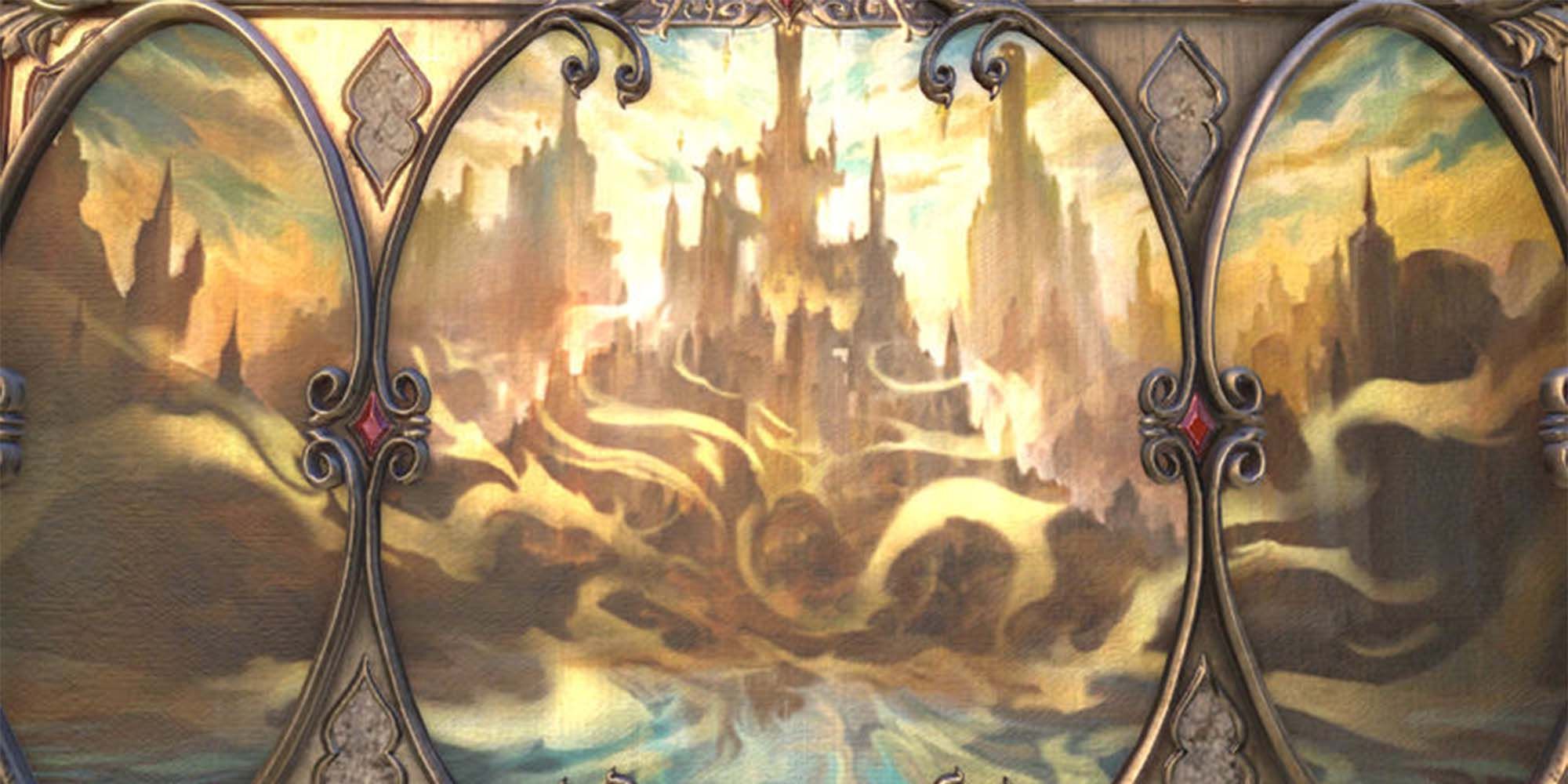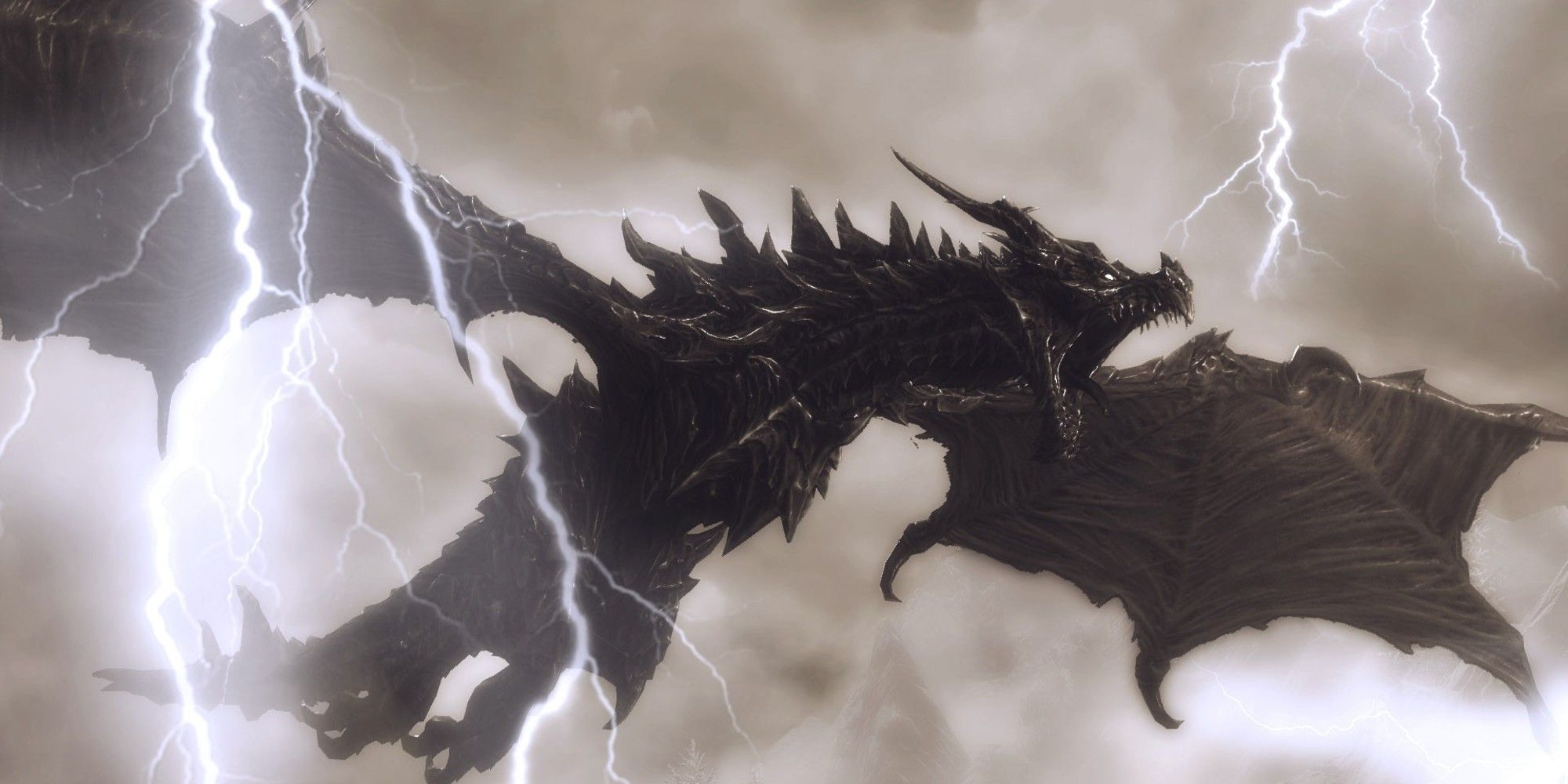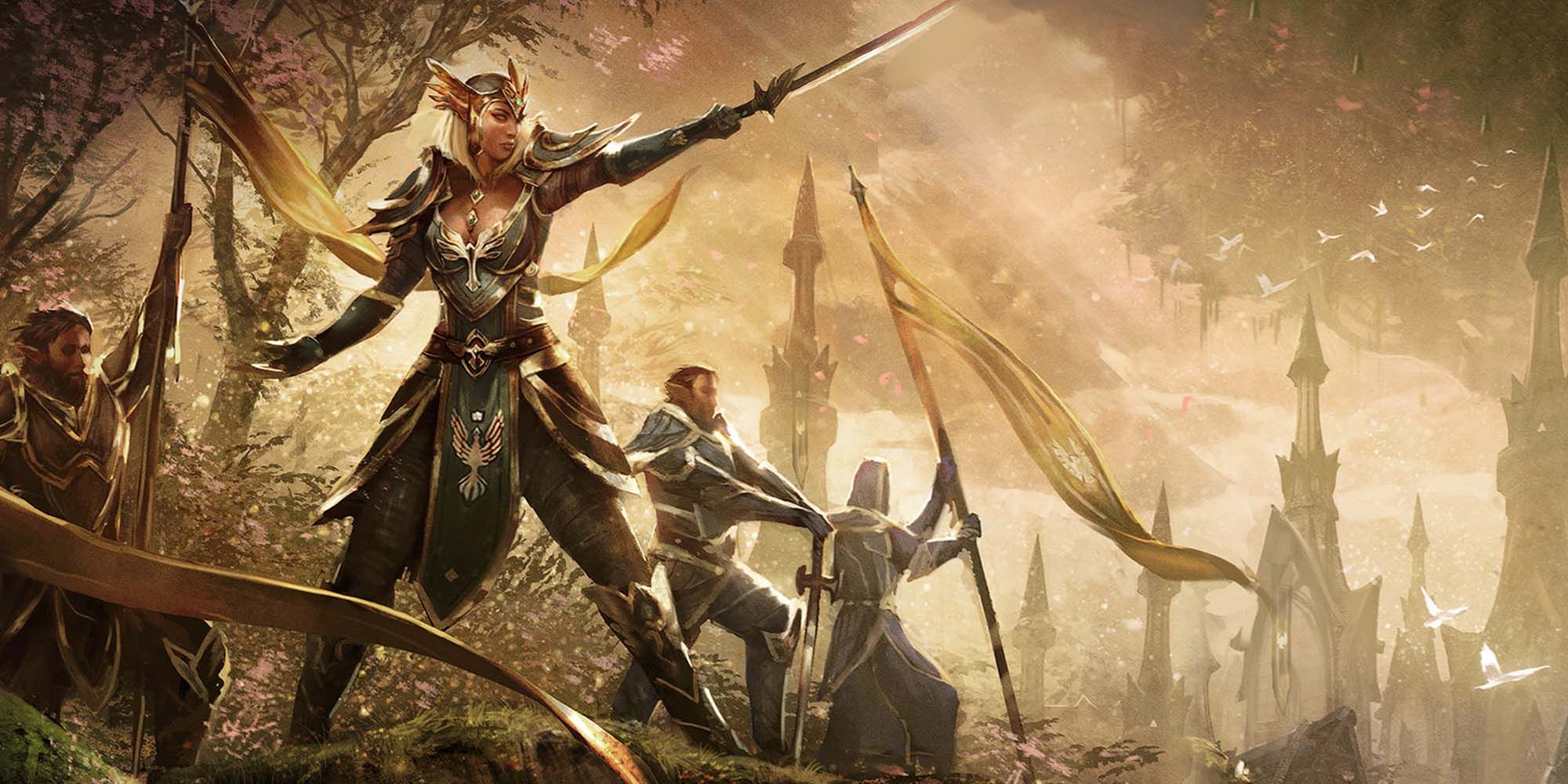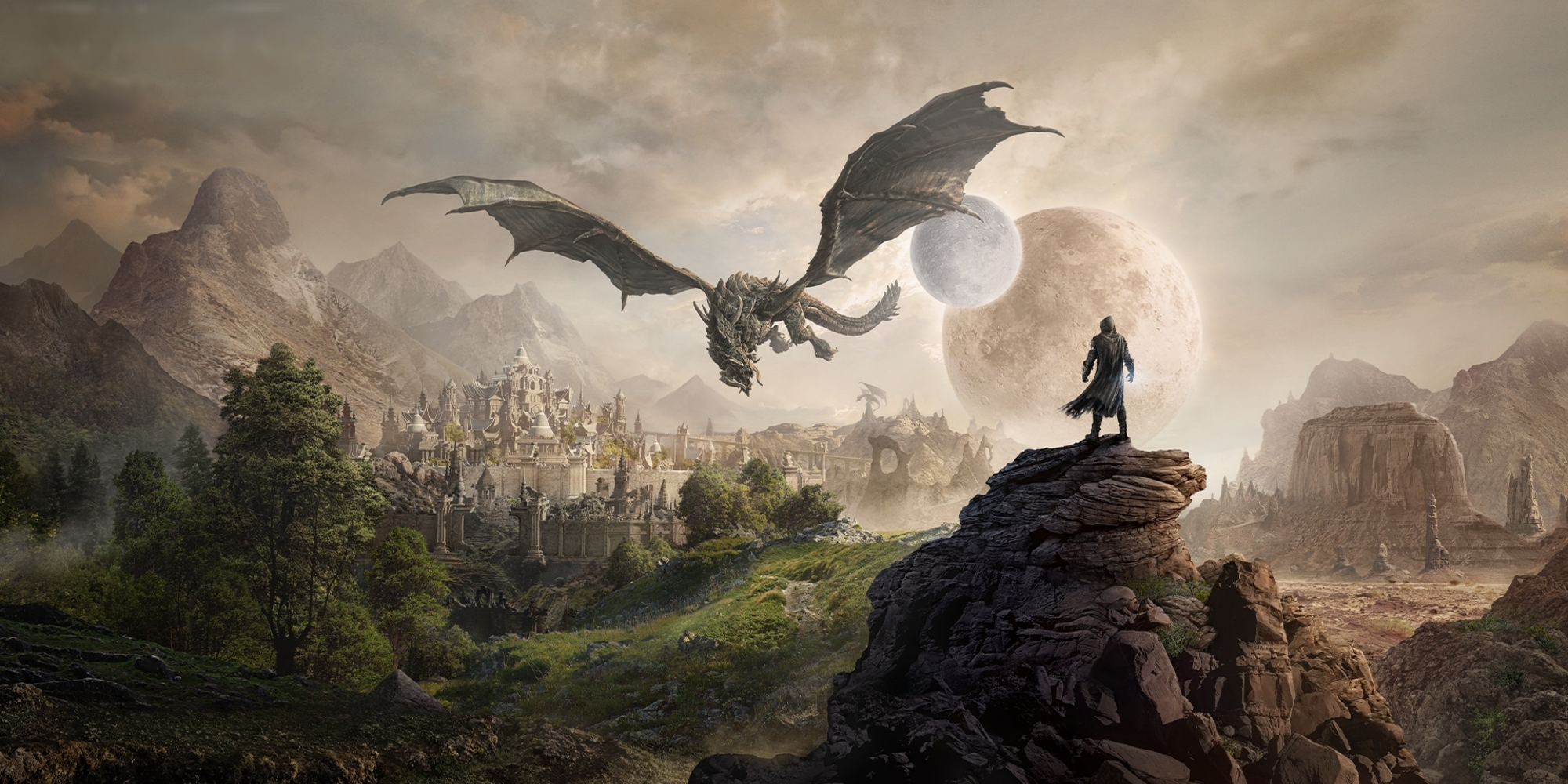
One of the most impressive feats of The Elder Scrolls series is the depth and complexity of its lore. With five mainline installments, multiple spin-offs, and The Elder Scrolls: Online, players have a lot to chew on and many have gone to great lengths to collect and document all in-game literature in order to piece together a cohesive timeline. Tamriel is filled to the brim with books that recount the stories, legends, and lives of those who have long since passed, but not every narrator is a reliable one as many groups skew history in their favor.
In real life and in-game, Tamriel's ancient history is told through contradictory accounts and theories based on surviving records. Though every game is set in Tamriel's timeline, none have explored the continent prior to the First Empire. This puts the player in the same spot as in-game historians, trying to track the major events that cannot be denied and fill in the blanks as best as possible. This overview of Tamriel's ancient history explores the broad strokes of The Elder Scrolls' timeline, but it is just the tip of a much more nuanced iceberg.
A perfect example of these nuances is discerning which of the two empires is The First Empire: the Nordic Empire or the Alessian Empire. While the Nordic Empire technically came first, the Alessian Empire changed Tamriel in such a fundamental way that the effects of Alessia's rule are still felt in The Elder Scrolls V: Skyrim. The effects that the Alessian Empire had on Tamriel earned it the coveted moniker; and here is a breakdown of all The Elder Scrolls' lore and history leading up to Alessia's rise to power.

The history of Tamriel is split into various eras, beginning with the amorphous Dawn Era. This is when the universe itself takes shape and where time is not yet a concept. The Monomyth by the Temple Zero Society, states that everything began when the primordial beings Anu and Padomay came into existence, representing the various opposing forces that are the foundation of existence. Each one birthed their own soul to create two more beings: Sithis, who represents the empty darkness of the Void, and Anui-El, who represents eternal light and the soul of life itself.
From the opposing forces of Sithis and Anui-El came the Et'Ada, The Elder Scrolls' pantheon of gods, who occupied the magic realm of Aetherius. One of them was a god named Lorkhan, who had the desire to create a realm of his own and persuaded the Aedra to assist him. Some Aedra agreed and began lending their power toward this realm's creation, but those who refused left the realm of Aetherius and formed their own realm, Oblivion. These dissenters would become the first Daedra, now known as the Daedric Princes.
Lorkhan and the Aedra would successfully create the mortal realm of Mundus and the planet Nirn. It's debated as to whether it was an unforeseen consequence or if it was trick to bring down the gods but either way, the Aedra invested far more of their power into the creation of Mundus. Those who survived became the first Eight Divines and punished Lorkhan by tearing out his heart and throwing it to Nirn. The Aedra returned to Aetherius and Lorkhan's body was left the rot in the void.

On Nirn, the time god Akatosh created the Dragons who make up one of the many "First Ones." Other First Ones include the sentient Hist Trees as well as the now-extinct ancestors of Man, Elves, and Khajiit. The fighting between the First Ones fractured Nirn into various continents, the most prominent being Tamriel. However, the splitting of Nirn caused its various inhabitants to separate from Tamriel and live on isolated landmasses.
Humans resided on the frozen continent of Atmora and were ruled by the Dragons. In south-eastern Tamriel, the Hist Trees needed protectors and created what would become known as the Argonians, who are the best choice for such a swampy environment. Some Elves, or "Mer" in their tongue, were scattered across Tamriel but the majority lived on the fabled continent of Aldmeris. It's hard to discern when, how long, and in what order, all of this happened, but the establishment of mortal society also established a sense of linear time, thus ushering in Tamriel's next era.

The Merethic Era roughly translates to "Era of Elves," which began when the Aldmer fled from their home. The Aldmer were The Elder Scrolls' first Elven race whose homeland was (supposedly) the lost continent of Aldmeris. Legends say that Aldmeris was a city utopia that stretched as far as the eye could see. While there is very little documentation of both this time and Aldmeris itself, an anonymous text called The Lay of Firsthold states that the Elves had to flee their homeland due to an unknown "doom oblivious."
Most of the Aldmer would settle on the Summerset Isles, becoming the Altmer. The Pocket Guide to the Empire, Third Edition: Other Lands states that expeditions were launched to find out what became of Aldmeris, but the few that returned couldn't find any sign that the continent still existed. All surviving records from this point outline the Altmer's journey from the Summerset Isles to the shores of Tamriel. The Altmer quickly spread throughout the continent, which led to the formation of new cultures and new races of Elves, such as the Ayleids, Falmer, Dwemer, Bosmer, and Chimer.
In the far north, humans began to grow tired of the Dragon's rule and many left Atmora for Tamriel. These Atmorans established small settlements throughout Highrock, Hammerfell, and Skyrim. According to the Pocket Guide to the Empire, First Edition: Skyrim, the Atmorans, now known as Nords, brokered an uneasy peace with Skyrim's Snow Elves who had already settled in the north. This peace was broken when the Snow Elves began to feel threatened by the growth and progress of the Nord's culture.

In an event known as The Night of Tears, Snow Elves attacked the Nords without warning, nearly killing all of them except for Ysgramor and his sons. They fled back to Atmora to gather an army of Atmoran warriors who would become known as the Five Hundred Companions. The fearsome guild of fighters returned to Skyrim and fought the Snow Elves to near extinction, but many managed to flee to other lands for safety. The Nords then wasted no time in laying the foundation of their empire.
Before the Nords could establish themselves fully in Skyrim, the tension between the Atmorans and Dragons reached a boiling point. In exchange for complete obedience, the Dragons granted some of their power to the Dragon Priests, which quickly corrupted them and led them to rule with an iron fist. The Dragon at the head of it all was Alduin, who was regarded as the greatest creation of Akatosh by the Dragons. Over time, Alduin began to feel that he could conquer all of Mundus for the Dragons, an attitude that lead to his now-infamous moniker, Alduin the World-Eater.
Humans tried to resist but they didn't know how to defeat the Dragon Priests, let alone the Dragons themselves - but they would soon learn. According to the various etchings in and around Skyrim's High Hrothgar, the goddess Kyne managed to convince Alduin's brother Paarthurnax to help Man. Paarthurnax taught them the power of the Voice, which shifted the balance of the war once the Nords created the Dragonrend Shout and the first Dragonborn, Miraak, emerged. The end of the Dragon War came when ancient Nordic heroes fought Alduin at the Throat of the World by using a mix of shouts and an Elder Scroll, which banished Alduin into the flow of time.

In the south of Tamriel, a Bosmer named Eplear managed to unite the fractured Bosmer in Valenwood, establishing the Camoran Dynasty. One of Skyrim's 337 books is Before the Ages of Man by Aicantar of Shimerene, which recounts the tale of Eplear's campaign and how, after unifying the Bosmer, he developed Tamriel's first calendar. From that moment forward, the founding of the Camoran Dynasty marked year zero of the First Era.
In the year 240, the power balance in Tamriel started to shift as the Nords began their conquest of the north. They took Skyrim first but didn't waste time in taking High Rock, Hammerfell, Morrowind, and the northern part of Cyrodiil. While the Nords were shifting power in the north, the Nedes were shifting power in the heart of Tamriel.
Pocket Guide to the Empire, Third Edition: Cyrodiil outlines the history of the Ayleids and the advantages their race had over the Nedes. The Nedic people predated the Nords as they were some of the first to arrive on Tamriel. Instead of establishing a fortified kingdom or settlement, they continued to travel south. Unfortunately, the Ayleids were starting to build up Cyrodiil at that time and needed a strong workforce to construct their biggest project, the White-Gold Tower.
This construction would be a massive undertaking for the Ayleids, so they took advantage of the disproportionately weak Nedic people by enslaving them. The Nedes were not only a workforce but also served as fodder for the sadistic tendencies of the Daedra worshipping Ayleids. Daedra Worship: The Ayleids by Phrastus of Elinhir outlines the many acts of cruelty inflicted on the Nedes in order to appease even the most underrepresented Daedric Princes; from torture to "gut-gardening," and even setting children aflame.

In the year 242, Cyrodiil began to fracture as Aedra worshippers grew in number, which sparked internal instability between the Ayleids. Knowing they were underestimated and had the perfect opportunity, the Nedes began a massive uprising, now known as the Slave Rebellion. The figurehead of this rebellion was Slave-Queen Alessia, and her leadership allowed the Slave Rebellion to overthrow the Ayleids and declare Alessia the Empress of Cyrodiil in only a year, establishing the Alessian Empire in 243.
Alessia ruled for the remainder of her life and upon her death, the time god Akatosh dubbed her Saint Alessia and made her the Ninth Divine. He then bound her soul to the Amulet of Kings and its Divine Covenant, which gives her descendants the power to protect Magnus from the Daedra.According to The Book of the Dragonborn by Prior Emelene Madrine, her descendants were also blessed with dragon blood, making Alessia the first female Dragonborn and the first of the Dragonborn bloodline.
These two blessings alone gave the Alessian Empire the moniker of the First Empire, as those blessings are the backbone of both The Elder Scrolls IV: Oblivion and The Elder Scrolls V: Skyrim, respectively - both of which occur centuries later. Even with all this, there are countless conflicts, discoveries, and consequential moments that had to be excluded in order to trace the events that directly led to Alessia's rise to power. The lore of The Elder Scrolls is incredibly dense, and one can get lost in rabbit holes for hours, and this is only scratching the surface of Tamriel's ancient history.
from ScreenRant - Feed https://ift.tt/3GMRIFx


0 Comments